Interview with Artist & Designer Jon Burgerman: Doodles, Scrawls & Scribbles
Posted by Cass Art on 6th Jul 2018
Whether you doodle, draw, scribble or scrawl, Artist and Designer Jon Burgerman wants everyone to pick up a pen and start drawing.
Placed somewhere between fine art, urban art and pop culture, his lively and animated drawings are bursting with humour and playfulness. Focusing on ‘quiet interventions', his work expands across a multitude of spaces. From canvases and ambitious public murals to 3D sculptures and social animations, his instantly recognisable style and crazed characters offer a fun escape from everyday life.
We caught up with Jon to find out more about his approach to drawing, where his obsession with doodling began and the influence of social media in animation...
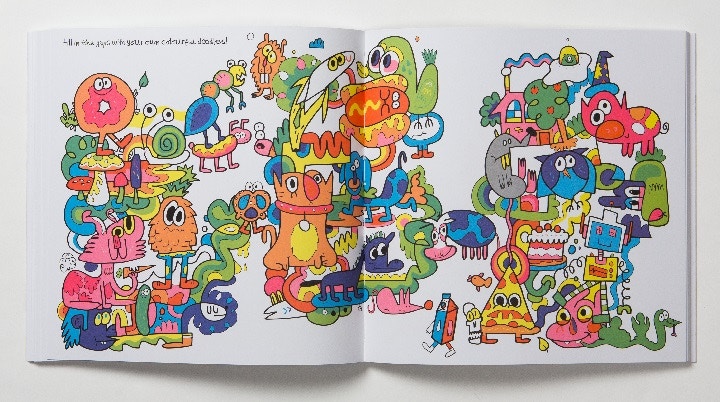
Hi Jon! Can you tell us a little about where your began your creative career?
My name is Jon. My surname really is Burgerman. I studied Fine Art at The Nottingham Trent University and graduated with a first class degree in 2001. I didn’t even have a broadband internet connection then. I think I might have had a mobile phone though. Currently I live in NYC, and have been here for 7 years now. I decided to move to the US for a change. I think it’s healthy for an artist or a human. It’s good to see life from a different perspective. My studio is in a building called The Invisible Dog and since last year I’ve been making books. In the last 12 months I’ve had five books published, two of which are children’s story books.
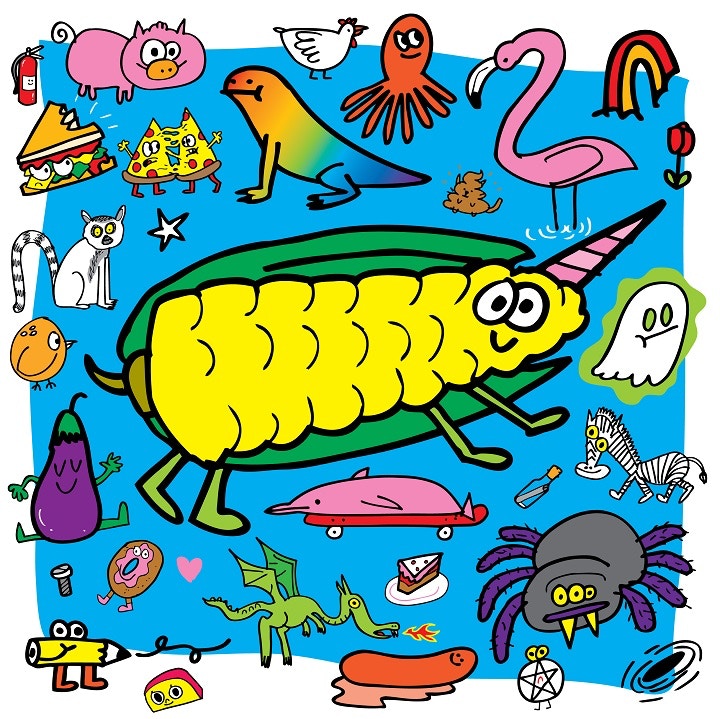
Where did your journey to ‘professional doodler’ begin?
I’ve always loved making and creating. I’ve been feverishly drawing since I could hold a crayon. I studied art, did a foundation course and then went to University. I’m glad I studied fine art and not illustration and design. Fine art is more pompous, but it’s really more about ideas. Ideas tell stories and share thoughts. For me, that is the fun thing about art, not necessarily just how it looks. How it looks might not be that important, it’s just part of it.
When I was being interviewed about my work at the start of my career in 2001 I would say I’m just ‘a doodler’. This wasn’t really a serious thing; I just wanted to downplay what I was doing and avoid pretentious discussion. Somehow the doodling thing stuck. I resisted - then embraced it. Call it what you want, doodling, drawing, scrawling… it doesn’t really matter all that much, as long as the work is good and interesting.
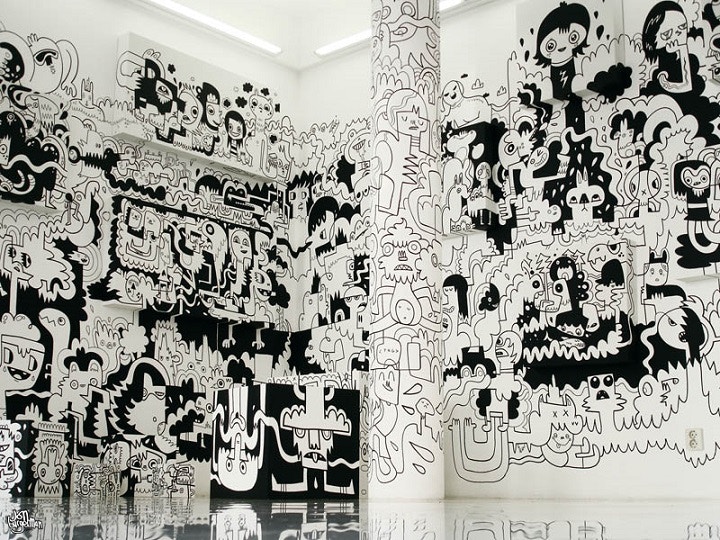 Your style uses very playful, colourful characters – almost with an animated approach that leaps off the page. How did you develop this unique style?
Your style uses very playful, colourful characters – almost with an animated approach that leaps off the page. How did you develop this unique style?
I get asked a lot about my ‘style’ by students and young artists. I’d say it’s a culmination of lots of things I’m personally interested in. It’s not based on the style of another artist I just wanted to copy. I have my work copied a lot and I think it’s a bit of a dead end for those artists copying me.
Your style is informed by what you read, wear, look at, eat, where you travel, what music you like etc. Your style is all the things that make you you. One shouldn’t try and be like someone else, just focus on being yourself… and then your style will start to develop. Don’t be a clone, be your own!
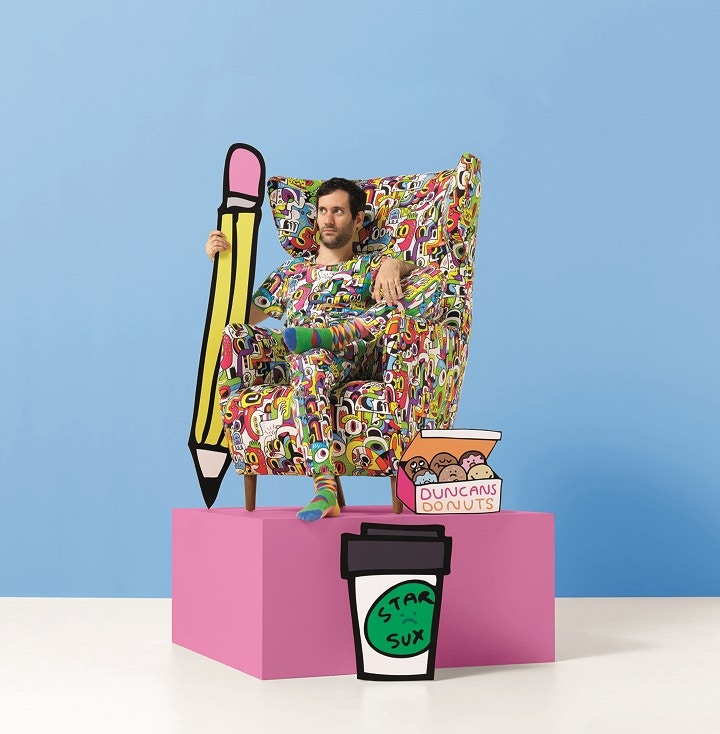
Your designs are very bold and busy. Where do you start the concept for a new idea?
With a pen on a piece of paper. I think and draw at the same time. When I make and create at the same time (whether it’s drawing or music or writing or cooking) I call that doodling. A doodle can be anything, not just a loose drawing. Doodling is about thinking as you make and allowing your thought process to become part of the final work.
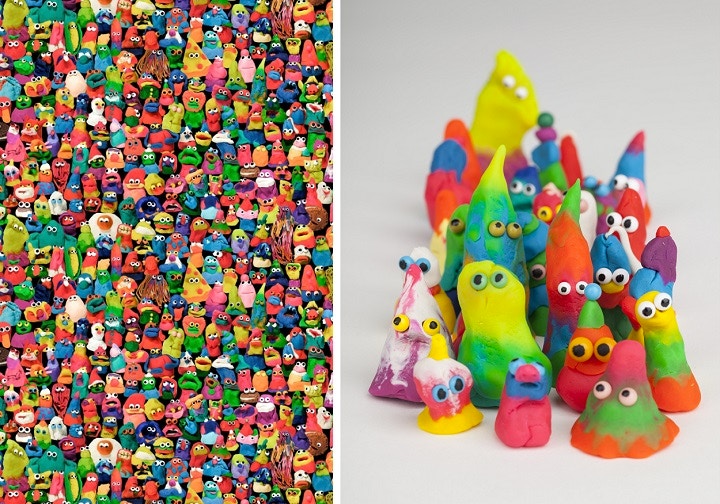
What art materials can you simply not live without?
I like the versatility of Posca Pens and Pilot Pens when it comes to line work. Golden Acrylics have always been my favoured material when introducing paint to my work. You can’t beat Playdoh when it comes to creating 3D pieces – plus Muji sketchbooks and coloured paper are staples in my studio.
What are you trying to achieve with your illustrations?
In a nutshell - a connection with the viewer. I want to take your eyeballs on a rollercoaster and your brain on rainbow hued daydream. If I can get a reaction, a laugh, grunt or giggle, then I’m happy. I’m trying to share things with my work I can’t articulate through other means.
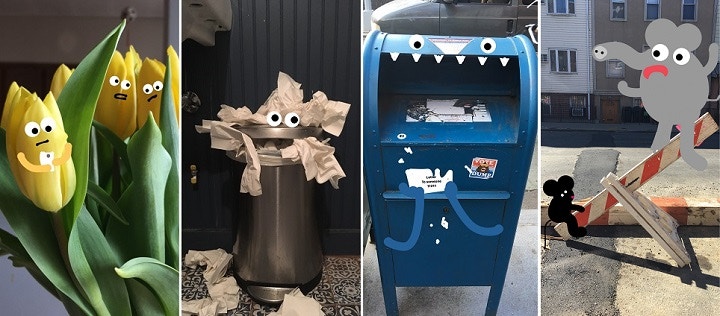
You use social media to bring your creatures to life. How important is it to engage with people digitally when it comes to the motivations behind your work?
I don’t care how I engage with people, as long as they’re engaged. I like the immediacy and directness with digital work on social. I can see something, take a photo, draw on it and share it to thousands of people in just a few minutes. And if they like it, potentially millions of people might see it. I think that’s amazing.
Watch Jon discuss the influence of Instagram within drawing and animation and how social media is transforming how we create instant animations.
What advice would you give to someone looking to start doodling or drawing?
Just do(odle) it! If you want to then just do. Drawing is cheap, easy and quick. You just need a pen and something to draw on and then you’re away! Keep going, keep challenging yourself and keep having fun.
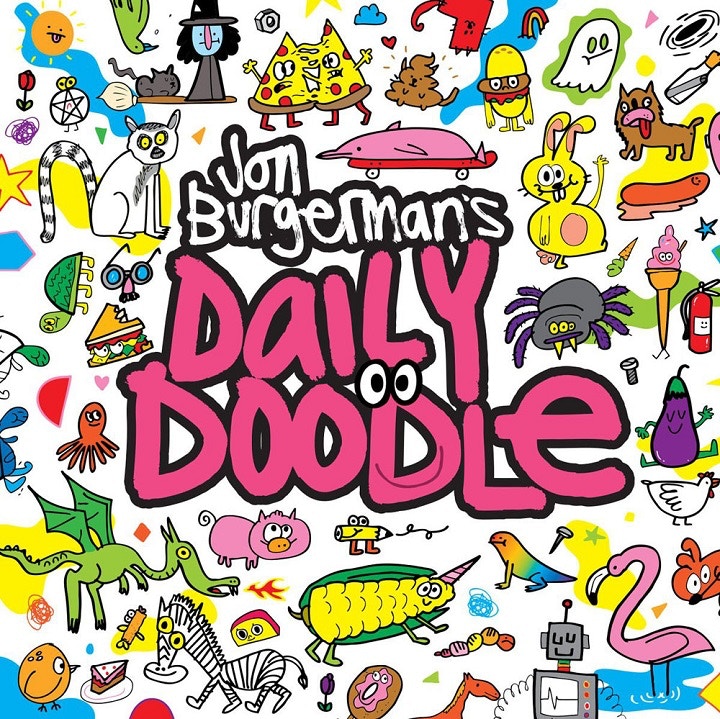
Congratulations on the release of your new guide, ‘Daily Doodle’ - can you tell us more about how the concept for the book began?
I used to do a live drawing a day on my snapchat account. I called it the Daily Doodle. It was a lot of fun trying to share how I draw things to others so I thought I’d try and make it into a book.
We believe it’s vital to encourage creativity in young people. How has your career lead to encouraging others to draw?
I think part of my job is to share the process. In everything I make I hope it’s easy to see how I created the work. I want everyone to be creative and feel the pleasure of having an idea and then realising it. Even if you don’t become an ‘artist’ it’s still really important to able to express yourself though creative means. Creative exercise is important in the same way physical exercise is.
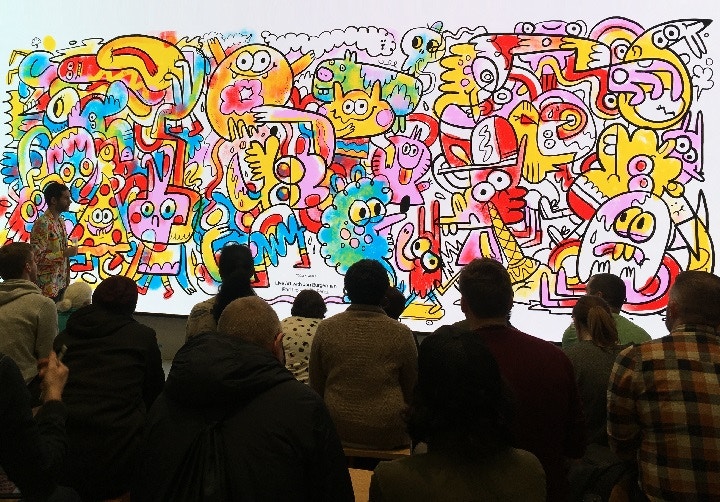
How did you decide on the different themes throughout the book and narrow down which characters and activities made the final cut?
I don’t know! I just tried to give a good variety. I kept asking myself ‘what would I like to draw?’ The funny thing is I’m actually pretty terrible at drawing most of the things in the book, so it was a real learning process for me in making it.
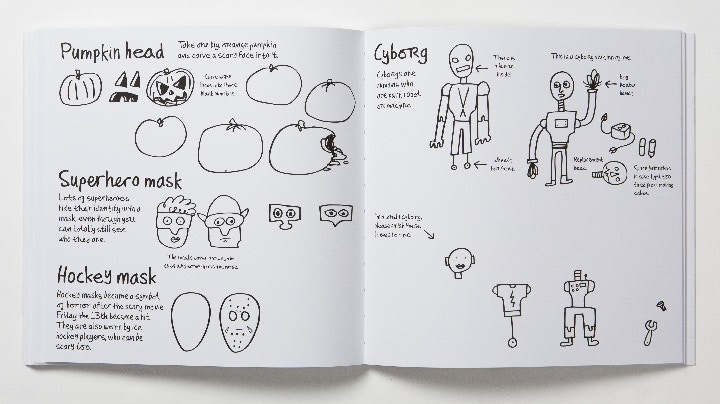
Do you think your approach to drawing can inspire children to pick up a pen? Is there a greater challenge when it comes to encouraging adults?
Yes I do! But actually most children don’t need encouragement, it’s adults that have the problem and are all blocked up. Most children have great imaginations and need little encouragement. Adults, on the other hand, are too worried about what everyone will think of their work. So worried that they are scared to even start drawing! As the idiot president would say ‘Sad!’
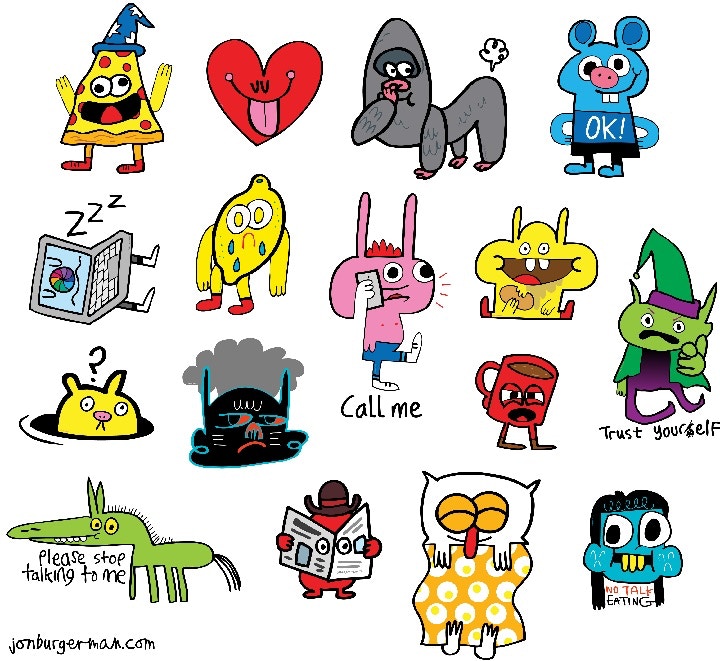
Feeling Inspired?
Explore more of Jon’s work online at www.jonburgerman.com or through www.burgerplex.com.


